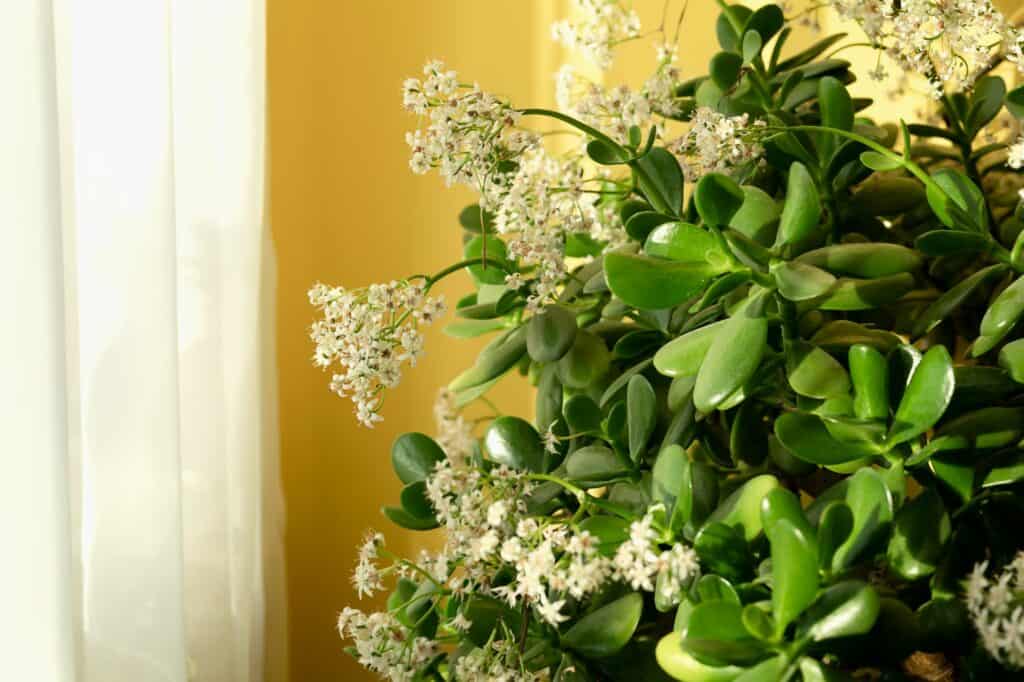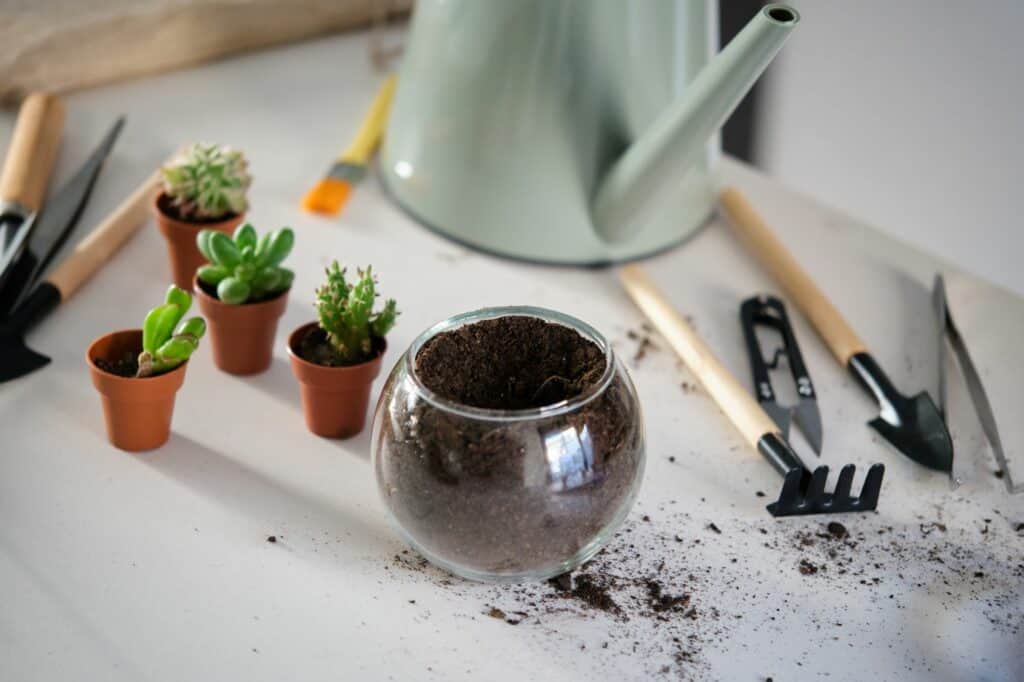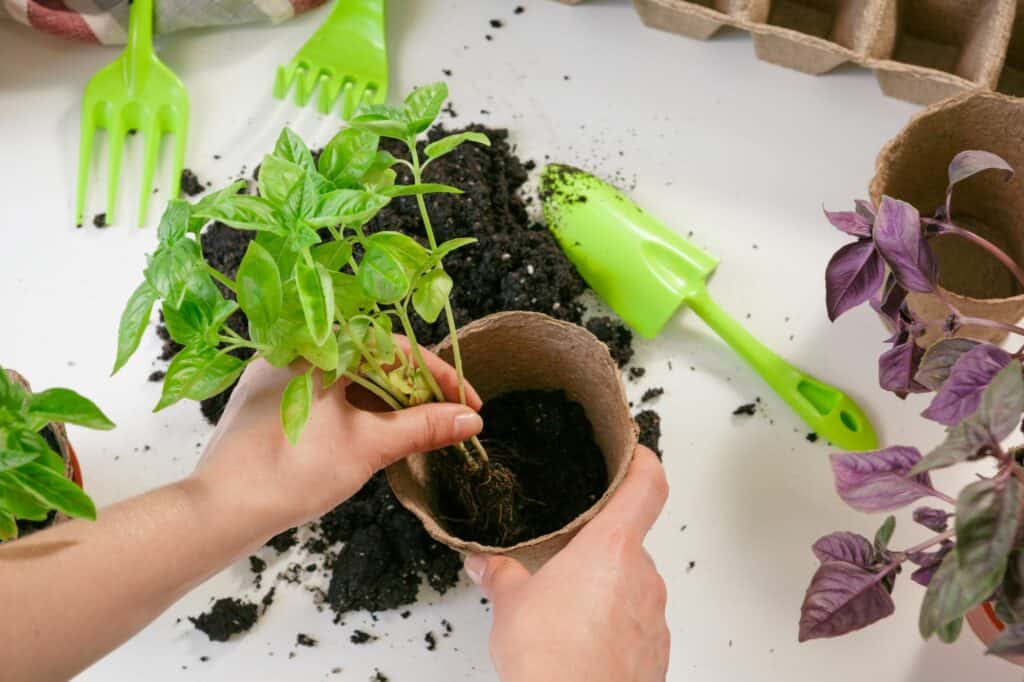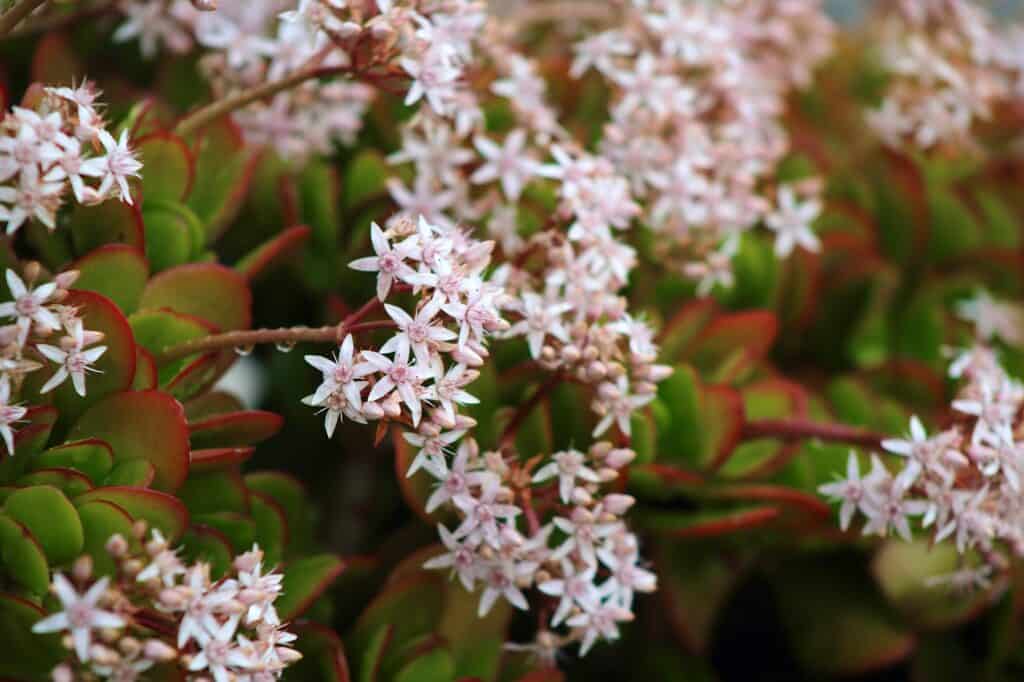Jade plants are a popular houseplant due to their attractive appearance and easy maintenance. However, even the most experienced gardeners can encounter issues with their jade plants, such as drooping leaves and branches.
This article will provide readers with a comprehensive guide on how to fix a drooping jade plant, covering everything from identifying the issue to proper care and maintenance.
To start, it is important to understand jade plants and their needs. Jade plants are succulents, meaning they store water in their leaves and stems. They prefer bright, indirect light and well-draining soil.
Overwatering and poor drainage are common issues that can cause a jade plant to droop, but there are other factors to consider as well, such as lighting and temperature.
Identifying the issue is the first step in fixing a drooping jade plant. This article will cover common issues such as watering and moisture problems, soil and drainage issues, lighting and temperature issues, and even pest and disease issues that can cause a jade plant to droop.
With proper care and maintenance, a drooping jade plant can be nursed back to health and thrive once again.
Key Takeaways
- Proper care and maintenance are essential for a healthy jade plant.
- Common issues such as overwatering and poor drainage can cause a jade plant to droop.
- Identifying the issue and taking corrective action can help a drooping jade plant recover.
More related articles:
Jade Plant Turning Brown: 6 Causes, Solutions & Best Care Tips
Jade Plant Drooping Stems: 5 Causes, Solutions & Best Care Tips
How to Save a Dying Jade Plant: 4 Expert Tips and Techniques

Understanding Jade Plants
Jade plants (Crassula ovata) are a type of succulent that originated in South Africa. They are known for their thick, fleshy leaves and their ability to store water in their stems and leaves.
Jade plants are popular indoor plants due to their low maintenance requirements and attractive appearance.
Characteristics of Jade Plants
Jade plants have a distinctive appearance that sets them apart from other succulents. They have thick, round leaves that are a vibrant green color.
The leaves are often tinged with red or brown around the edges, giving them a unique look. Jade plants can grow up to three feet tall and wide, but they are slow-growing and can take several years to reach their full size.
One of the most interesting characteristics of jade plants is their ability to regenerate. If a jade plant’s stem or leaves are damaged, they can often grow back new leaves or branches.
This makes jade plants a resilient and long-lasting addition to any indoor garden.
Ideal Conditions for Jade Plants
Jade plants are native to warm, dry regions and prefer bright, indirect sunlight. They can tolerate some direct sunlight, but too much can cause the leaves to burn. When growing jade plants indoors, it is important to place them near a window that receives plenty of natural light.
Jade plants require well-draining soil and should be watered sparingly. Overwatering can cause the roots to rot and the leaves to droop.
It is best to wait until the soil is completely dry before watering a jade plant. In the winter months, jade plants require even less water and can be watered as little as once a month.
Jade plants can tolerate a wide range of temperatures, but they prefer temperatures between 65 and 75 degrees Fahrenheit.
They can survive in temperatures as low as 50 degrees Fahrenheit, but they will stop growing and may drop their leaves if the temperature drops too low.

How to Fix a Drooping Jade Plant
If you have a jade plant that is drooping, it is important to identify the issue quickly to prevent further damage. In this section, we will discuss the signs of a drooping jade plant and the common causes of drooping.
Signs of a Drooping Jade Plant
A drooping jade plant can exhibit a variety of symptoms, including:
- Drooping or wilting leaves
- Limp or soft leaves
- Dropping or falling leaves
- Stems that bend or break easily
If you notice any of these symptoms in your jade plant, it is likely that your plant is drooping and needs attention.
Common Causes of Drooping
There are several reasons why a jade plant may droop, including:
- Overwatering: Overwatering is a common cause of drooping in jade plants. When the soil is too wet, the roots can become waterlogged and begin to rot, which can cause the plant to droop.
- Underwatering: Underwatering can also cause a jade plant to droop. When the soil is too dry, the plant may not be able to absorb enough water to support its leaves and stems.
- Poor Drainage: Poor drainage can lead to root rot, which can cause a jade plant to droop. If the soil does not drain well, excess water can accumulate around the roots and cause them to rot.
- Lack of Light: Jade plants require bright, indirect light to thrive. If they do not receive enough light, they may become weak and droop.
- Pests and Diseases: Pests and diseases can also cause a jade plant to droop. Spider mites, mealybugs, and scale insects can all damage the leaves and stems of a jade plant, causing them to droop.
Identifying the cause of a drooping jade plant is the first step in fixing the issue. Once you have identified the cause, you can take steps to correct it and help your plant recover.
Watering and Moisture Issues
Jade plants are sensitive to watering and moisture issues. Overwatering and underwatering can both cause the plant to droop and eventually die. Proper watering techniques are essential to keep the plant healthy.
Effects of Overwatering
Overwatering is one of the most common causes of jade plant drooping. When the soil is oversaturated, the roots of the plant cannot get enough oxygen.
This can lead to root rot, which is a fungal disease that can kill the plant. Signs of overwatering include yellowing leaves, soggy soil, and a foul odor.
Effects of Underwatering
Underwatering is also a common cause of jade plant drooping. When the plant does not get enough water, the leaves will start to wilt and turn brown. The soil will also become dry and hard. If the plant is not watered soon enough, it may die.
Using a Moisture Meter
Using a moisture meter can help determine if the jade plant needs watering. The moisture meter will measure the soil moisture level and indicate if the plant needs water.
It is important to make sure the moisture meter is inserted deep enough into the soil to get an accurate reading.
Regular watering is essential to keep the jade plant healthy. The plant should be watered when the soil is slightly dry to the touch. It is important to make sure the soil is well-draining to prevent oversaturation.
Soil and Drainage
Choosing the Right Soil
Choosing the right soil is essential for a healthy jade plant. It is recommended to use a well-draining soil mix that is specifically formulated for succulents.
A succulent soil mix typically contains ingredients such as perlite, pumice, and sand, which help to improve drainage and prevent soil compaction.
Importance of Proper Drainage
Proper drainage is crucial for a jade plant’s health. If the soil is poorly draining, excess water can accumulate in the pot, leading to root rot and other issues.
It is important to ensure that the pot has enough drainage holes to allow excess water to flow away from the plant.
Using Perlite and Pumice
Perlite and pumice are two common ingredients in a succulent soil mix that can help improve drainage.
Perlite is a lightweight volcanic glass that helps to aerate the soil and prevent compaction. Pumice is a porous volcanic rock that also helps to improve drainage by allowing water to flow freely through the soil.
When repotting a jade plant, it is recommended to mix perlite and pumice into the soil to improve drainage. A good ratio is two parts soil to one part perlite and one part pumice.
This will help to create a well-draining soil mix that will promote healthy root growth and prevent root rot.
Lighting and Temperature
Ideal Light Conditions
Jade plants require bright, indirect light to thrive. Direct sunlight can scorch the leaves and cause them to droop. If the plant is not getting enough light, it can become leggy and weak, with drooping stems.
If the jade plant is indoors, place it near a south-facing window, which provides bright, indirect light. If the plant is not receiving enough light, consider using a grow light to supplement the natural light.
Understanding Temperature Needs
Jade plants prefer warm temperatures between 65°F to 75°F (18°C to 24°C). However, they can tolerate a range of temperatures as long as they are not extreme.
Extreme temperatures can cause stress to the plant, resulting in drooping leaves and stems. In winter, keep the plant away from cold drafts and ensure that the temperature does not drop below 50°F (10°C).
In summer, protect the plant from direct sunlight and keep it in a shaded area to avoid temperature stress. If the plant is exposed to extreme temperatures, it may drop its leaves or become dormant until conditions improve.

Fertilizing and Repotting
How to Fertilize Jade Plants
Jade plants require minimal fertilization, and over-fertilization can cause more harm than good. Experts recommend fertilizing jade plants only once or twice a year, during the growing season, which is usually from spring to early fall.
When choosing a fertilizer, it’s important to choose one that is high in phosphorus and potassium and low in nitrogen.
Nitrogen promotes leaf growth, which is not ideal for jade plants as they need to focus on developing strong stems and roots. Phosphorus and potassium, on the other hand, promote root growth and overall plant health.
To fertilize a jade plant, mix the fertilizer according to the package instructions and apply it to the soil. Avoid getting the fertilizer on the leaves or stem as this can cause burning. Water the plant thoroughly after fertilizing to help distribute the nutrients evenly.
When and How to Repot
Jade plants do not require frequent repotting, but they do need to be repotted when they outgrow their current container.
Signs that a jade plant needs to be repotted include roots growing out of the drainage holes, the plant becoming top-heavy, or the soil drying out too quickly.
When repotting a jade plant, choose a container that is only slightly larger than the current one. Jade plants prefer to be slightly root-bound, and too much space can cause the soil to stay wet for too long, which can lead to root rot.
Before repotting, water the plant thoroughly to make it easier to remove from the container. Gently loosen the soil around the roots and remove any dead or damaged roots.
Place the plant in the new container and fill in the gaps with fresh, well-draining soil. Water the plant thoroughly and allow the soil to drain before returning the plant to its usual location.
It’s important to note that repotting can be stressful for a jade plant, so it’s best to do it during the growing season when the plant is actively growing and can recover more quickly.
Pests and Diseases
Identifying Common Pests
Jade plants are relatively pest-resistant, but they can still fall victim to certain bugs and diseases.
Some of the most common pests that affect jade plants include spider mites, mealybugs, and aphids.
These bugs can cause damage to the plant by sucking the sap from the leaves and stems, which can lead to wilting, yellowing, and stunted growth.
Spider mites are tiny, spider-like creatures that are difficult to see with the naked eye. They can be identified by the fine webbing they leave on the plant’s leaves and stems.
Mealybugs, on the other hand, are small, white, cottony insects that can be found on the undersides of the leaves and in the leaf axils. Aphids are small, pear-shaped insects that can be found on the new growth of the plant.
Dealing with Diseases
Jade plants can also fall victim to diseases, such as root rot, which is caused by overwatering. Root rot can cause the plant to droop and wilt, and the leaves may turn yellow or brown.
If root rot is suspected, it is important to remove the affected plant from its pot and trim away any rotting roots. The plant should then be repotted in fresh, well-draining soil.
Other pathogens that can affect jade plants include fungal diseases, such as powdery mildew and leaf spot.
Powdery mildew is characterized by a white, powdery coating on the leaves, while leaf spot causes brown or black spots on the leaves. To prevent these diseases, it is important to keep the plant’s foliage dry and to avoid overcrowding the plant.
Pests and diseases can cause a jade plant to droop and wilt. Identifying common pests, such as spider mites, mealybugs, and aphids, is important in preventing damage to the plant.
Diseases, such as root rot and fungal diseases, can also be detrimental to the plant’s health. Proper care, such as avoiding overwatering and keeping the plant’s foliage dry, can help prevent these issues from occurring.

Care and Maintenance
Jade plants are low maintenance, drought-resistant, and hardy succulents. However, they can still droop if not given proper care and maintenance. Here are some tips on how to care for and maintain a drooping jade plant.
Pruning Techniques
Pruning is an essential part of jade plant care. It helps to promote new growth and maintain the plant’s shape. When pruning a jade plant, it is important to use clean and sharp pruning shears to avoid damaging the plant.
To prune a drooping jade plant, start by identifying the damaged or dead leaves and branches. Cut them off at the base of the stem, making sure to leave a small amount of the stem intact. This will help the plant to heal and prevent further damage.
Maintaining Humidity Levels
Jade plants prefer low to moderate humidity levels. However, they can still suffer from stress if the humidity levels are too low. To maintain the proper humidity levels for a jade plant, here are some tips:
- Use a humidifier: This is the easiest way to maintain the proper humidity levels for a jade plant. Set the humidifier to a low or moderate setting, and place it near the plant.
- Group plants together: Grouping plants together can help to increase the humidity levels around them.
- Use a pebble tray: Place a layer of pebbles in a tray, and fill it with water. Place the plant on top of the pebbles, making sure that the water does not touch the bottom of the pot. As the water evaporates, it will increase the humidity levels around the plant.
- Mist the plant: Use a spray bottle to mist the plant’s leaves and stem. This will help to increase the humidity levels around the plant.
Winter Care
During the winter months, jade plants go into a dormant phase and require less water. It is important to reduce watering during this time to prevent overwatering, which can lead to root rot and a drooping plant.
To care for a jade plant during the winter months, reduce watering to once every two to three weeks. Check the soil moisture level before watering to ensure that it is dry to the touch.
Frequently Asked Questions
How often should I water my jade plant?
Jade plants are succulents and can store water in their leaves. Therefore, they do not need to be watered frequently. Overwatering can be harmful to the plant. Water your jade plant only when the soil is completely dry. This can be done once every two to three weeks, depending on the humidity and temperature of your home.
What are the signs of an overwatered jade plant?
Overwatering can lead to root rot, which can cause the plant to wilt and droop. The leaves may turn yellow and fall off. The soil may also have a foul odor, and the roots may appear brown and mushy.
How can I tell if my jade plant is underwatered?
An underwatered jade plant may have wrinkled or shriveled leaves. The leaves may also appear dull and dry. The soil may be completely dry, and the plant may be drooping.
What should I do if my jade plant has soft branches?
Soft branches can be a sign of overwatering. If you notice this, stop watering the plant immediately. Allow the soil to dry out completely before watering it again. Remove any damaged or rotten roots and repot the plant in fresh soil.
What are some common causes of a drooping jade plant?
Drooping jade plants can be caused by overwatering, underwatering, improper lighting, or pests. It is important to identify the cause before taking any action.
How can I revive a wilting jade plant?
If your jade plant is wilting, the first step is to identify the cause. If it is due to overwatering, stop watering the plant and allow the soil to dry out completely. If it is due to underwatering, water the plant thoroughly and allow the excess water to drain out. If the plant is in a low-light area, move it to a brighter location. If pests are present, treat the plant with an appropriate insecticide.

Hey, I’m Lisa and I’ve been an avid gardener for over 30 years. I love writing, talking and living in the garden! Feel free to connect with me on my socials below


